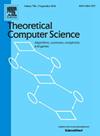特征模型演化方案的模块化可靠性检验
IF 1
4区 计算机科学
Q3 COMPUTER SCIENCE, THEORY & METHODS
引用次数: 0
摘要
功能模型演化计划(fmep)描述了软件产品线(SPLs)的功能模型如何随时间演进。在产品线的生命周期中,不同的时间点可以存在不同的特征模型,而FMEP描述了如何为给定的时间点计算特征模型。spc通过组合可选和强制的特性来利用软件的可变性和可重用性。随着业务需求的变化,fmep应该支持中间更新。因此,根据SPL上不断发展的业务需求,计划通过在不同的时间点添加、删除、移动或更改元素来包含对初始模型的更新,这可能会影响将来应该从计划中派生出来的特性模型。维护fmep的一个反复出现的挑战是更新可能导致不一致的中间特征模型,最明显的是所谓的悖论。悖论可能不会在执行计划更新以获得特定特征模型的第一个时间点上实现,但可能只有与计划规定的后续修改相结合才能创建结构上无效的模型。相应地,对计划的单个修改可能需要在受影响元素的生命周期内进行多次检查,以排除矛盾。当前的方法要求在计划的整个生命周期内,从更新应用于FMEP的时间点进行分析。在本文中,我们定义了一个所谓的基于间隔的特征模型(IBFM)来表示fmep,该模型精确定义了空间和时间范围,从而缩小了时间间隔和更新可能影响的子模型。我们提出了一个用于更新IBFMs的规则系统,并证明了所提出规则的合理性,并展示了它们的模块化,即每个规则严格地在其时间和空间范围内运行。我们对我们的模块化方法进行了详细的评估,并给出了实验结果,结果表明我们优于现有的线性方法。本文章由计算机程序翻译,如有差异,请以英文原文为准。
Modular soundness checking of feature model evolution plans
Feature model evolution plans (FMEPs) describe how feature models for software product lines (SPLs) evolve over time. While different feature models can exist for different points in time over the lifetime of the product line, an FMEP describes how to compute a feature model for a given time point. SPLs capitalise on the variability and reusability of the software through combining optional and mandatory features. As business requirements change over time, FMEPs should support intermediate update. A plan hence contains updates to an initial model by adding, deleting, moving or changing elements at different points in time, in line with the evolving business requirements on the SPL, potentially affecting feature models that should be derived in the future from the plan.
A recurring challenge in maintaining FMEPs is that updates may lead to inconsistent intermediate feature models, most notably so-called paradoxes. A paradox may not materialise at the first point in time an update on the plan is performed to obtain a particular feature model, but may only in combination with a later modification prescribed by the plan create a structurally invalid model. Correspondingly, a single modification to a plan may require multiple checks over the liftetime of the affected elements to rule out paradoxes.
Current approaches require the analysis from the point in time an update is applied to an FMEP throughout the entire lifetime of the plan. In this paper, we define a so-called interval-based feature model (IBFM) to represent FMEPs, with a precise definition of spatial and temporal scopes that narrow the time interval and the sub-models that an update can affect. We propose a rule system for updating IBFMs, and also prove the soundness of the proposed rules and show their modularity, i.e., that each rule operates strictly within its temporal and spatial scopes. We have conducted a detailed evaluation on our modular approach and present the experimental results, which show that we outperform an existing linear approach.
求助全文
通过发布文献求助,成功后即可免费获取论文全文。
去求助
来源期刊

Theoretical Computer Science
工程技术-计算机:理论方法
CiteScore
2.60
自引率
18.20%
发文量
471
审稿时长
12.6 months
期刊介绍:
Theoretical Computer Science is mathematical and abstract in spirit, but it derives its motivation from practical and everyday computation. Its aim is to understand the nature of computation and, as a consequence of this understanding, provide more efficient methodologies. All papers introducing or studying mathematical, logic and formal concepts and methods are welcome, provided that their motivation is clearly drawn from the field of computing.
 求助内容:
求助内容: 应助结果提醒方式:
应助结果提醒方式:


